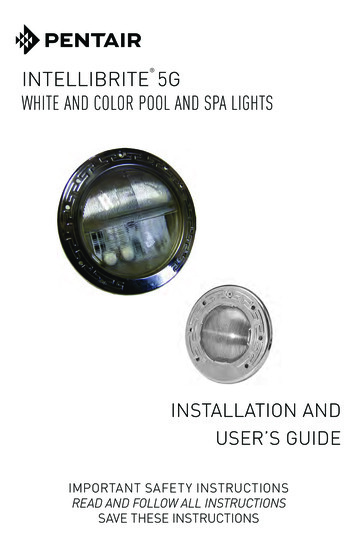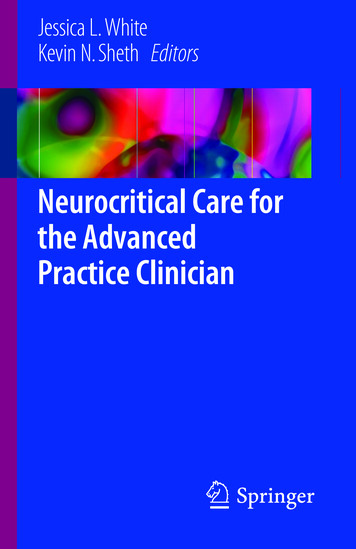
Transcription
Jessica L. WhiteKevin N. Sheth EditorsNeurocritical Care forthe AdvancedPractice Clinician123
Neurocritical Care for theAdvanced Practice Clinician
Jessica L. White Kevin N. ShethEditorsNeurocritical Care forthe Advanced PracticeClinician
EditorsJessica L. WhiteNeuroscience IntensiveCare UnitYale New Haven HospitalNew Haven, ConnecticutUSAKevin N. ShethNeurosciences IntensiveCare UnitYale School of MedicineNew Haven, ConnecticutUSAISBN 978-3-319-48667-3 ISBN 978-3-319-48669-7DOI 10.1007/978-3-319-48669-7(eBook)Library of Congress Control Number: 2017946839 Springer International Publishing AG 2017This work is subject to copyright. All rights are reserved by the Publisher,whether the whole or part of the material is concerned, specifically the rightsof translation, reprinting, reuse of illustrations, recitation, broadcasting, reproduction on microfilms or in any other physical way, and transmission or information storage and retrieval, electronic adaptation, computer software, or bysimilar or dissimilar methodology now known or hereafter developed.The use of general descriptive names, registered names, trademarks, servicemarks, etc. in this publication does not imply, even in the absence of a specificstatement, that such names are exempt from the relevant protective laws andregulations and therefore free for general use.The publisher, the authors and the editors are safe to assume that the adviceand information in this book are believed to be true and accurate at the dateof publication. Neither the publisher nor the authors or the editors give a warranty, express or implied, with respect to the material contained herein or forany errors or omissions that may have been made. The publisher remains neutral with regard to jurisdictional claims in published maps and institutionalaffiliations.Printed on acid-free paperThis Springer imprint is published by Springer NatureThe registered company is Springer International Publishing AGThe registered company address is: Gewerbestrasse 11, 6330 Cham, Switzerland
Dedicated to our colleagues in the Neuro ICU –the nurses, physicians, and advanced practiceclinicians who commit themselves to providingcompassionate care for the neurologically ill.And to our patients and their families – thepractice and art of critical care neurology is ourservice to them.
AcknowledgmentThis project strives to highlight the professional collaborationbetween advanced practice clinicians and physicians as part ofa multidisciplinary team. We are grateful to our contributors forexemplifying this collaboration by generously sharing theirexpertise and experience in the field of neurocritical care.We would like to thank the Yale University NeurocriticalCare faculty and APC staff for their encouragement and feedback through this process. And special thanks to Guido Falconefor his editorial assistance. We are privileged to work everydaywith such a phenomenal team.vii
Contents1 The Role of Advanced Practice Cliniciansin the Neuroscience ICU . . . . . . . . . . . . . . . . . . . . . . . . .Jessica L. White and Kevin N. Sheth2 Neuroanatomy . . . . . . . . . . . . . . . . . . . . . . . . . . . . . . . . . .Laura A. Lambiase, Elizabeth M. DiBella,and Bradford B. Thompson153 Neuroradiology . . . . . . . . . . . . . . . . . . . . . . . . . . . . . . . . . 29Susan Yeager, Mohit Datta, and Ajay Malhotra4 Aneurysmal Subarachnoid Hemorrhage . . . . . . . . . . 55Jessica L. White and Charles Matouk5 Intracerebral Hemorrhage . . . . . . . . . . . . . . . . . . . . . . . 75Devra Stevenson and Kevin N. Sheth6 Acute Ischemic Stroke . . . . . . . . . . . . . . . . . . . . . . . . . . . 93Karin Nyström and Joseph Schindler7 Mechanical Thrombectomy for AcuteIschemic Stroke . . . . . . . . . . . . . . . . . . . . . . . . . . . . . . . . . 117Ketan R. Bulsara, Jennifer L. Dearborn,and Jessica L. Whiteix
xContents8 Malignant Ischemic Stroke andHemicraniectomy . . . . . . . . . . . . . . . . . . . . . . . . . . . . . . . 137Julian Bösel9 Cerebral Venous Thrombosis . . . . . . . . . . . . . . . . . . . . . 151Gretchen Crabtree and Chad Miller10 Traumatic Brain Injury . . . . . . . . . . . . . . . . . . . . . . . . . . 165Megan T. Moyer and Monisha A. Kumar11 Intracranial Pressure Management . . . . . . . . . . . . . . . 183Danielle Bajus and Lori Shutter12 Seizures and Status Epilepticus . . . . . . . . . . . . . . . . . . . 201Catherine Harris and Emily Gilmore13 Neurological Infections . . . . . . . . . . . . . . . . . . . . . . . . . . 223Brian A. Pongracz, Douglas Harwood,and Barnett R. Nathan14 Brain Tumors . . . . . . . . . . . . . . . . . . . . . . . . . . . . . . . . . . . 251Raoul J. Aponte, Ankur R. Patel,and Toral R. Patel15 Spinal Cord Injury . . . . . . . . . . . . . . . . . . . . . . . . . . . . . . 269Jennifer Massetti and Deborah M. Stein16 Neuromuscular Disease . . . . . . . . . . . . . . . . . . . . . . . . . . 289Peter Reuter and Alejandro Rabinstein17 Hypoxic-Ischemic Injury After Cardiac Arrest . . . . . 307Jodi D. Hellickson and Eelco F.M. Wijdicks18 Brain Death and Organ Donation . . . . . . . . . . . . . . . . 321Dea Mahanes and David Greer
Contents19 Goals of Care and Difficult Conversations . . . . . . . . . 343Christine Hudoba and David Y. Hwang20 Multimodality Monitoring . . . . . . . . . . . . . . . . . . . . . . . 363Richard Cassa and Nils Petersen21 Airway and Ventilation Management . . . . . . . . . . . . . 387Matthew Band and Evie Marcolini22 Pharmacology . . . . . . . . . . . . . . . . . . . . . . . . . . . . . . . . . . . 407Kent A. Owusu and Leslie Hamilton23 Common Complications in the Neuro ICU . . . . . . . . 439Jennifer L. Moran and Matthew A. Koenig24 Helpful Links and Resources . . . . . . . . . . . . . . . . . . . . . 467David Tong and Jessica L. Whitexi
Chapter 1The Role of Advanced PracticeClinicians in the Neuroscience ICUJessica L. White and Kevin N. ShethThe field of neurocritical care encompasses a broad range ofneurological pathology and requires a multidisciplinaryapproach to provide best patient care. At institutions across thecountry, physicians work alongside physician assistants andnurse practitioners to care for neurologically ill patients. Thiscollaborative relationship serves to provide an ideal complement of specialized medical knowledge and experienced bedside care. Stemming from a historical genesis in primary carepractice, the fundamental education of nurse practitioners andphysician assistants is general by design, including basic principles of medical science and clinical management. This educational foundation offers the benefit of professional flexibilityand the ability to adapt to a myriad of subspecialties; however,such adaptation requires continued focused learning whenentering a subspecialty to acquire advanced understanding ofpatient care. Recognizing this challenge, we embarked on aJ.L. White, PA-C (*) K.N. Sheth, MDYale University, New Haven, CT, USAe-mail: Jessica.white@yale.edu; Kevin.sheth@yale.edu Springer International Publishing AG 2017J.L. White, K.N. Sheth (eds.), Neurocritical Care for the AdvancedPractice Clinician, DOI 10.1007/978-3-319-48669-7 11
2J.L. White and K.N. Shethproject to meet the knowledge needs of physician assistants andnurse practitioners that have selected neurocritical care as theirfield of practice.Many terms have been used to describe the collective role ofphysician assistants and nurse practitioners—midlevel provider,nonphysician provider, and advanced practice provider amongthem. For the purposes of this project, the term advanced practiceclinician (APC) is used to encompass both professions. The roleof APCs has evolved considerably over the past several decades.Both professions were developed in the 1960s to adjunct a shortage of primary care providers in the United States. The implementation of restrictions on house staff work hours in the 1990sset the stage for the rapid expansion of the APC role into thehospital setting [1, 2]. This role of APCs working in inpatientmedicine has grown substantially since that shift. In 1995 theacute care nurse practitioner certification was developed for thepurpose of focusing training on caring for critically ill patients.This certification now represents the fifth most common area ofpractice for nurse practitioners [3]. Similarly, a hospital medicinespecialty certification is available for physician assistants and 25% of these professionals now work in hospital settings [4].As the medical community is faced with continued projections ofphysician shortages across the board, the role of APCs in theinpatient realm is projected to increase [1, 2, 5]. The field ofneurocritical care has experienced significant growth in recentyears, outpacing the growth of residency and fellowship trainingprograms. Across the country, this rapid expansion has provideda considerable opportunity for APCs to enter the field of neurocritical care and work in a dynamically evolving area.Given this shift in scope of practice, it has been imperative toprovide APCs with the training and experience necessary toprovide exemplary care to the critically ill. In intensive careunits across the country, it has been shown that nurse practitioners and physician assistants provide appropriate medical careto ICU patients, as measured in rates of morbidity and mortality[6, 7]. Beyond these measurements, there are also established
1The Role of Advanced Practice3benefits of integrating APCs into intensive care units. APCsoffer a unique level of experience and continuity of care that canresult in improved compliance with clinical guidelines [8],decreased length of stay, and overall cost savings [9–11].Intensive care units have integrated APCs in a variety ofways—some by developing units staffed by APCs alone, othersby creating multidisciplinary teams of APCs and physicians.Regardless of the chosen structure, APC staffing can aid in providing sustained clinical expertise to bedside care, particularlyin settings where house staff work on rotating schedules. In thechallenging environment of the intensive care unit, the presenceof seasoned clinicians to give support to physicians-in-trainingprovides significant benefits. Survey data from academic institutions indicate that APCs are perceived as an effective complement to physicians-in-training, enhancing patient care throughimproved communication and continuity of care [12].Furthermore, APCs contribute to the training of residents byreducing their workload, reducing patient-to-provider ratios,and increasing didactic educational time [13].The neurocritical care community has experienced this shiftin staffing along with the rest of the critical care realm. In keeping with broader trends, APCs working in neurocritical care areseen as promoting effective communication, a team environment, and, most importantly, timely identification of patientswith neurological deterioration [14]. However, this impact doesnot come without dedicated learning and experience. The fieldof neurocritical care includes a unique spectrum of neurologicaldisease and much of the expertise required to skillfully care forneuroscience ICU patients is not addressed in the general education of the APCs. The purpose of this book is to bridge the gapbetween the foundational medical education of APCs and thefundamentals of the neurocritical care subspecialty. By discussing common neurocritical topics as presented by a multidisciplinary collection of leaders in the field, we hope to engage andempower the continued expansion of the role of advanced practice clinicians in neurocritical care.
4J.L. White and K.N. ShethReferences1. Gordon CRCR. Care of critically ill surgical patients using the 80-houraccreditation Council of Graduate Medical Education work-weekguidelines: a survey of current strategies. Am Surg. 2006;72(6):497–9.2. Cooper RAR. Health care workforce for the twenty-first century: theimpact of nonphysician clinicians. Annu Rev Med. 2001;52(1):51–61.3. Kleinpell RR. American Academy of nurse practitioners NationalNurse Practitioner sample survey: focus on acute care. J Am AcadNurse Pract. 2012;24(12):690–4.4. Assistants AAoP. 2013 AAPA annual survey report. 2013.5. Colleges AoAM The complexities of physician supply and demand:projections through 2025. http://www.tht.org/education/resources/AAMC.pdf.6. Costa DKDK. Nurse practitioner/physician assistant staffing and critical care mortality. Chest. 2014;146(6):1566.7. Gershengorn HBHB. Impact of nonphysician staffing on outcomes in amedical ICU. Chest. 2011;139(6):1347.8. Gracias VHVH. Critical care nurse practitioners improve compliancewith clinical practice guidelines in "semiclosed" surgical intensive careunit. J Nurs Care Qual. 2008;23(4):338–44.9. Russell DD. Effect of an outcomes-managed approach to care of neuroscience patients by acute care nurse practitioners. Am J Crit Care.2002;11(4):353–62.10. Landsperger JS. Outcomes of nurse practitioner-delivered critical care:a prospective cohort study. Chest. 2015;149(5):1146–54.11. Kleinpell RMRM. Nurse practitioners and physician assistants in theintensive care unit: an evidence-based review. Crit Care Med.2008;36(10):2888–97.12. Joffe AMAM. Utilization and impact on fellowship training of non- physician advanced practice providers in intensive care units of academic medical centers: a survey of critical care program directors.J Crit Care. 2014;29(1):112–5.13. Dies NN. Physician assistants reduce resident workload and improvecare in an academic surgical setting. JAAPA Montvale NJ. 2016;29(2):41–6.14. Robinson JJ. Neurocritical care clinicians' perceptions of nurse practitioners and physician assistants in the intensive care unit. J NeurosciNurs. 2014;46(2):E3–7.
Chapter 2NeuroanatomyLaura A. Lambiase, Elizabeth M. DiBella,and Bradford B. Thompson2.1 Skull, Fossae, and MeningesThe cranium is composed of multiple bones that act as a protective container for the brain (Figs. 2.1 and 2.2). It is composed ofthe frontal bone, which articulates with the two parietal bonesat the coronal suture. The parietal bones meet at the midline andare joined by the sagittal suture. The temporal bones lie inferiorto the parietal bones and posterior to the greater wing of thesphenoid bone. The occipital bone meets the parietal bones atthe lambdoid suture and protects the posterior surface of thebrain. At the base of the occipital bone, there is a large opening,the foramen magnum, through which the spinal cord connects tothe brainstem. A series of smaller bones including the zygomatic, ethmoid, maxilla, mandible, nasal, vomer and lacrimalbones comprise the complex facial surface of the skull [6, 7].L.A. Lambiase, PA-C E.M. DiBella, PA-C B.B. Thompson, MD (*)Brown University, Providence, RI, USAe-mail: llambiase@lifespan.org; emdibella@gmail.com;bthompson@lifespan.org Springer International Publishing AG 2017J.L. White, K.N. Sheth (eds.), Neurocritical Care for the AdvancedPractice Clinician, DOI 10.1007/978-3-319-48669-7 25
6L.A. Lambiase et al.Frontal boneSphenoid boneParietal boneLacrimal boneEthmoid boneNasal boneTemporal boneZygomatic boneMaxillary boneMandibleFig. 2.1 Bones of the cranium (Used with permissions from Galliciet al. [2])The bones of the skull articulate to form three distinct fossae:anterior, middle, and posterior (Fig. 2.3). The anterior fossa isformed by the frontal, ethmoid, and sphenoid bones and contains the anterior and inferior aspects of the frontal lobes. Themiddle fossa is formed by the sphenoid and temporal bones andcontains the temporal lobes. Additionally, the sella turcica ofthe sphenoid bone provides a protective seat for the pituitarygland within the hypophysial fossa. The posterior fossa is
2Neuroanatomy7Frontal boneSphenoid boneParietal boneLacrimal boneEthmoid boneOccipital boneNasal boneTemporal boneZygomatic boneMaxillary boneMandibleFig. 2.2 Bones of the cranium (Used with permissions from Galliciet al. [2])p redominantly formed by the occipital bone with small contributions from the sphenoid and temporal bones—it contains the brainstem and the cerebellum.The brain is covered in three layers of protective meninges,which work with the skull and cerebrospinal fluid (CSF) toblunt the effects of insults to the brain. The dura mater is thethickest fibrous external layer, which adheres to the internalsurface of the cranium. The dura can be dissected into two distinct layers: the periosteal layer, which connects the dura to theskull, and the meningeal layer, which lies more medially. The
8L.A. Lambiase et al.Frontal boneSphenoid boneParietal boneEthmoid boneTemporal boneOccipital boneFig. 2.3 Cranial fossa (Used with permissions from Gallici et al. [3])dura mater folds in on itself in the interhemispheric fissure tocreate the falx cerebri. An additional dural fold c reates the tentorium cerebelli, separating the cerebral hemispheres from thecerebellum. While these dural folds provide structure to thebrain, they constitute sites of potential herniation in the settingof space occupying lesions or cerebral edema.The arachnoid mater lies medial to the dura mater. The subarachnoid space separates the arachnoid and pia mater. Smallfibrous strands called trabeculae tether the arachnoid and pia toone another. The CSF in this space serves as another protectivebuffer for the brain. The pia mater is the thinnest meningeal
2Neuroanatomy9layer and is adherent to the brain. This layer is highly vascularand provides oxygen and nutrients to the brain [6, 7, 15].Clinical Correlate With traumatic injury, there is potential for bleedingbetween the skull and dura (epidural hematoma),between the dura and arachnoid meninges (subduralhematoma), or within the subarachnoid space (subarachnoid hemorrhage). (See Chap. 10 for further clinicalinformation). An epidural hematoma occurs most commonly when atemporal bone fracture severs the middle meningealartery, although venous bleeding can also be a cause. A subdural hematoma is most often caused by tearingof the bridging veins in the subdural space. Subarachnoid hemorrhage can occur in a number ofconditions, including rupture of a cerebral aneurysmand trauma.2.2 CerebrumThe cerebrum constitutes the bulk of the brain and is the arearesponsible for intellectual thought and function. The cerebralcortex is the circumferential gray matter on the surface of thebrain that covers the white matter and the deeper gray matterstructures. The cortex folds to create raised gyri and sunkengrooves called sulci.The cerebrum is separated into two hemispheres by the interhemispheric fissure and connected by a bundle of nervescalled the corpus callosum. Each hemisphere contains a frontal,parietal, temporal, and occipital lobe (Fig. 2.4). The frontal lobe
L.A. Lambiase et al.10Caudate nucleusFrontallobeCorona radiataBody of thelateral ventricleParietallobeCorpus callosumSuperior sagittal sinusOccipital lobeFig. 2.4 Cerebrum (Flair sequence MRI brain)is anterior to the central sulcus that separates the frontal andparietal lobes. The frontal lobe is the site of abstract reasoning,judgment, behavior, creativity, and initiative. The parietal lobeis involved in language, maintaining attention, memory, spatialawareness, and integrating sensory information including tactile,visual, and auditory senses [8]. The lateral (or Sylvian) fissure separates the parietal and frontal lobes from the temporal lobe.The temporal lobe processes sensory input such as language,visual input, and emotions. Tucked deep within the lateral fissure lays the insula, which is involved with emotion and consciousness. The occipital lobe is the most posterior lobe ofthe cerebrum and is separated from the parietal and temporallobes by the parieto-occipital fissure. The occipital lobe con-
2Neuroanatomy11tains the primary visual cortex and is involved in sight andinterpretation of visual stimuli. On the medial surface of eachcerebral hemisphere, the limbic cortex modulates emotion,behavior, and long-term memory [5].Clinical Correlate In a majority of people, the left hemisphere is dominant, being responsible for language production andcomprehension. This is true for both right-handed(90% left dominance) and left-handed individuals(70% left dominance). In the dominant hemisphere, Broca’s area in the frontallobe is responsible for fluent speech. Damage to thisregion causes expressive aphasia. Wernicke’s area,located in the temporal lobe of the dominant hemisphere, is responsible for comprehension. Damage toWernicke’s area causes receptive aphasia. Damage to the nondominant hemisphere can cause unilateral neglect of the contralateral side and apraxia,which can impact activities of daily living and lead tospatial disorientation.2.3 DiencephalonThe diencephalon is composed of the thalamus and hypothalamus. The thalami are bilateral relay stations for sensory information located medial to the internal capsule and lateral to the thirdventricle. They initiate reflexes in response to visual and auditorystimuli. Sensory fibers ascend from the brainstem to the thalamusand then their signals are relayed to the cortex.
L.A. Lambiase et al.12The hypothalamus is connected inferiorly to the pituitarygland; together, these structures regulate many hormonal activitieswithin the body. The anterior lobe of the pituitary gland (adenohypophysis) secretes hormones including adrenocorticotrophichormone, thyroid-stimulating hormone, luteinizing hormone,follicle-stimulating hormone, prolactin, and melanocyte-stimulating hormone in response to signals from the hypothalamus. Theposterior lobe (neurohypophysis) contains axons extending fromthe hypothalamus that secrete oxytocin and vasopressin [11].Clinical Correlate After pituitary surgery, central diabetes insipidus candevelop due to reduced secretion of antidiuretic hormone (vasopressin). Patients develop excessive urineoutput with resultant hypovolemia and hypernatremia.2.4 Basal GangliaThe basal ganglia are the deep gray matter structures consistingof the caudate nucleus, globus pallidus, and putamen (Fig. 2.5).The basal ganglia relay information from the cortex and workwith the cerebellum to coordinate movement. They are responsible for the initiation and termination of movements, prevention of unnecessary movement, and modulation of muscle tone.2.5 BrainstemThe brainstem consists of three components: midbrain, pons, andmedulla. It contains critical structures, such as the cranial nervenuclei, regulates several autonomic functions and basic reflexes,and determines the level of consciousness (Figs. 2.6–2.9).
2Neuroanatomy13Frontal lobeFrontal horns oflateral ventriclesCorpus PutamenInternalcapsulerd3 ventricleTemporallobeThalamusPosteriorhorns oflateralventriclesCorpuscallosumOccipital lobeFig. 2.5 Basal ganglia (Flair sequence MRI brain)The descending motor and ascending sensory pathways passthrough the brainstem. The reticular activating system resides inthe rostral brainstem and projects to the thalami and then thecortex to maintain wakefulness. Damage to this structure resultsin decreased level of arousal or coma.2.6 CerebellumThe cerebellum is located posterior to the brainstem (Figs. 2.7,2.8 and 2.9). The cerebellum works in tandem with the basalganglia to provide smooth coordinated movement. Damage to thecerebellum causes limb ataxia, vertigo, and gait disturbances.
L.A. Lambiase et al.14Frontal lobesTemporal tipof lateral eduncularcisternMidbrainAmbient cisternTemporallobeAmbient cisternQuadrigeminalcisternSuperiorsagittal sinusCerebellumOccipital lobesFig. 2.6 Midbrain and cisterns (Flair sequence MRI brain)2.7 Cerebral VasculatureThe arterial supply to the brain is divided into anterior and posterior circulations. The anterior circulation originates frombilateral internal carotid arteries (ICA). Each ICA travels superiorly through the neck and enters the cranium via the carotidcanal within the temporal bone. The ICA then bifurcates into theanterior cerebral artery (ACA) and the middle cerebral artery(MCA). The ACA supplies the anterior medial surface of thebrain, which includes the frontal and anterior parietal lobes. The
2Neuroanatomy15Temporal lobeInternal carotidarteriesBasilar artery4th ventriclePrepontinecisternPonsCerebellumFig. 2.7 Pons and posterior fossa (Flair sequence MRI brain)MCA supplies the bulk of the cerebral hemisphere. It typicallydivides into superior and inferior divisions as it passes throughthe lateral fissure. These divisions supply the cortex superiorand inferior to the lateral fissure, respectively. Prior to this bifurcation, several small vessels called the lenticulostriate arteriesarise from the MCA. These vessels provide the blood supply fora majority of the basal ganglia and internal capsule.The posterior circulation is supplied by bilateral vertebralarteries (VA). They travel superiorly through the transverse
L.A. Lambiase et al.16MedullaCerebellumFig. 2.8 Medulla and posterior fossa (Flair sequence MRI brain)processes of the cervical vertebrae and then the foramen magnumto enter the skull. The VAs then merge to form the basilar artery(BA), which in turn branches into bilateral posterior cerebralarteries (PCA). The PCAs supply the inferior and medial temporallobes as well as the occipital lobes. There are three major pairedbranches which arise from the posterior circulation to perfuse thebrainstem and cerebellum. The posterior inferior cerebellar artery(PICA) arises from the VA and supplies the lateral medulla and
The neurocritical care community has experienced this shift in staffing along with the rest of the critical care realm. In keep-ing with broader trends, APCs working in neurocritical care are seen as promoting effective communication, a team environ-ment, and, most importantly, timely identification of patients with neurological deterioration [14].




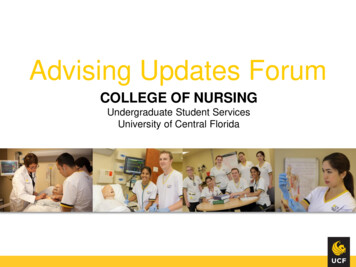
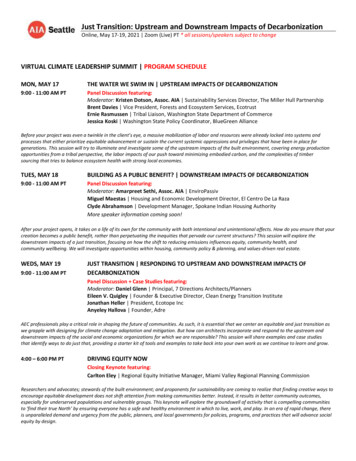
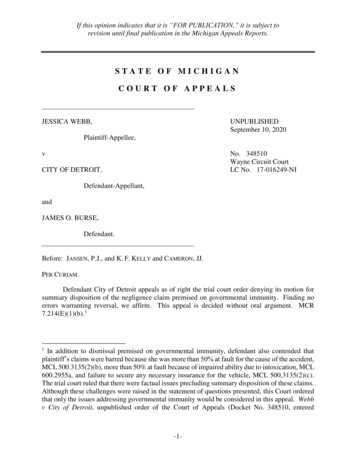
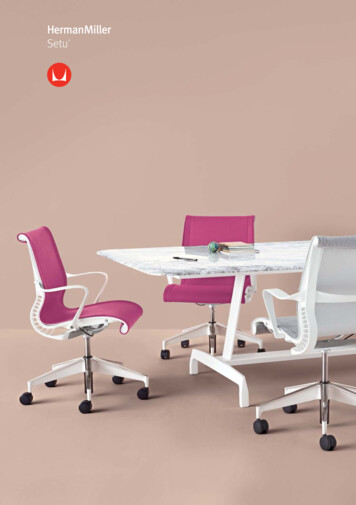
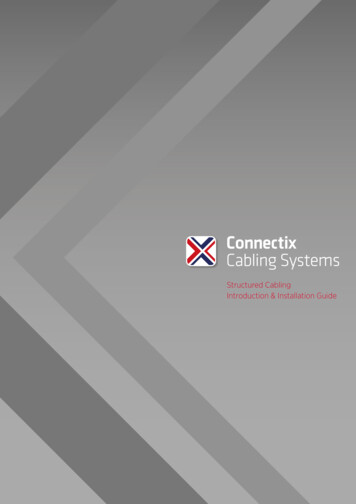
![[CLASS XII CHEMISTRY PRACTICALS]](/img/23/xii-chemistry-practical.jpg)
